Build Quality
As we already know the GIGABYTE P650B features a single 120mm fan design like many other offerings on the market that has come to be the preferred standard for quiet cooling environments due to the ability to move a larger volume of air at slower speeds than a smaller diameter fan. While great for quiet computing environments the key criteria in our evaluation are whether or not the cooling solution is sufficient, not necessarily its sound level or form factor.
External Build Quality


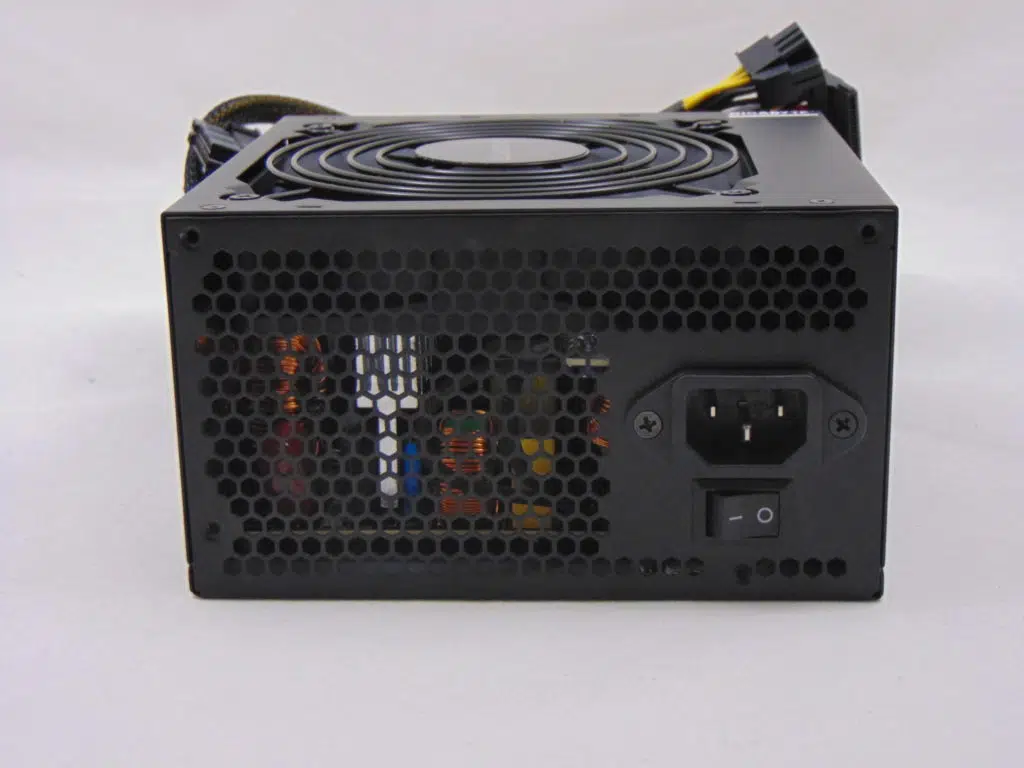


The exterior of the GIGABYTE P650B is similar to what we have seen from a lot of mid-market fully wired overhead fan units trimmed out in slightly textured black. So, the layout is traditional for a fully wired unit with an overhead fan in the ATX12v/EPS form factor but GIGABYTE trimmed out with some GIGABYTE branding.

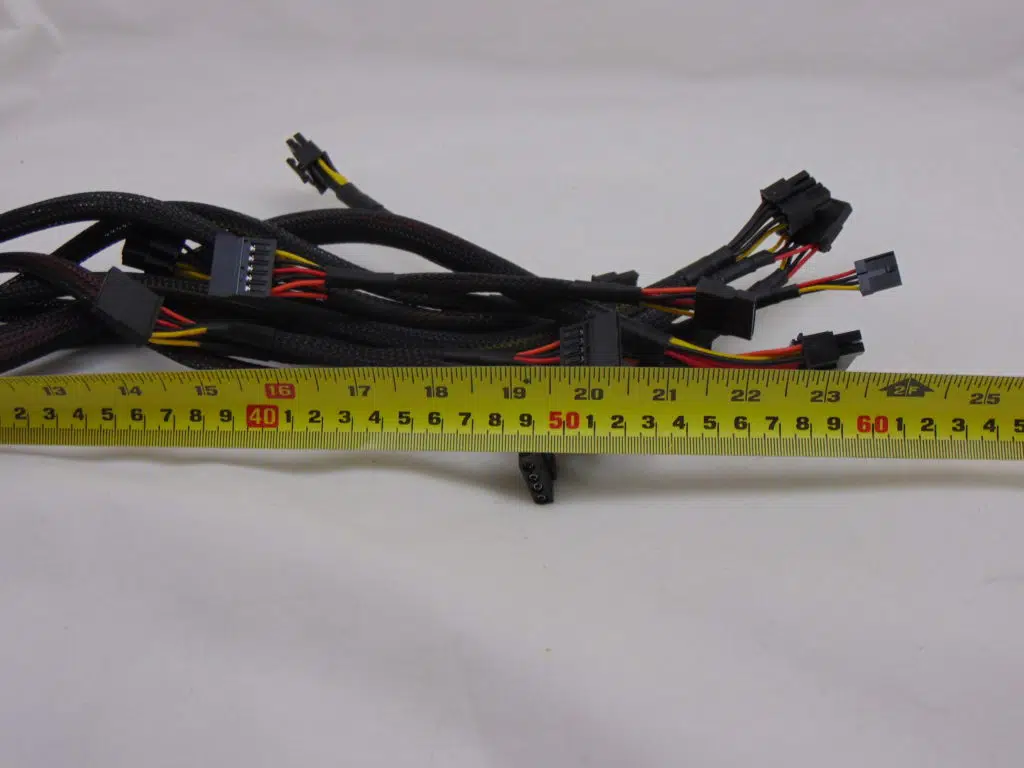
The GIGABYTE P650B comes in at a total length of ~5.5 inches while the cables come in at a length of ~19″ to 25″ to the first, or only, connector. Additionally, the cables are sleeved in a wire loom that is a bit short at the ends.
Internal Build Quality
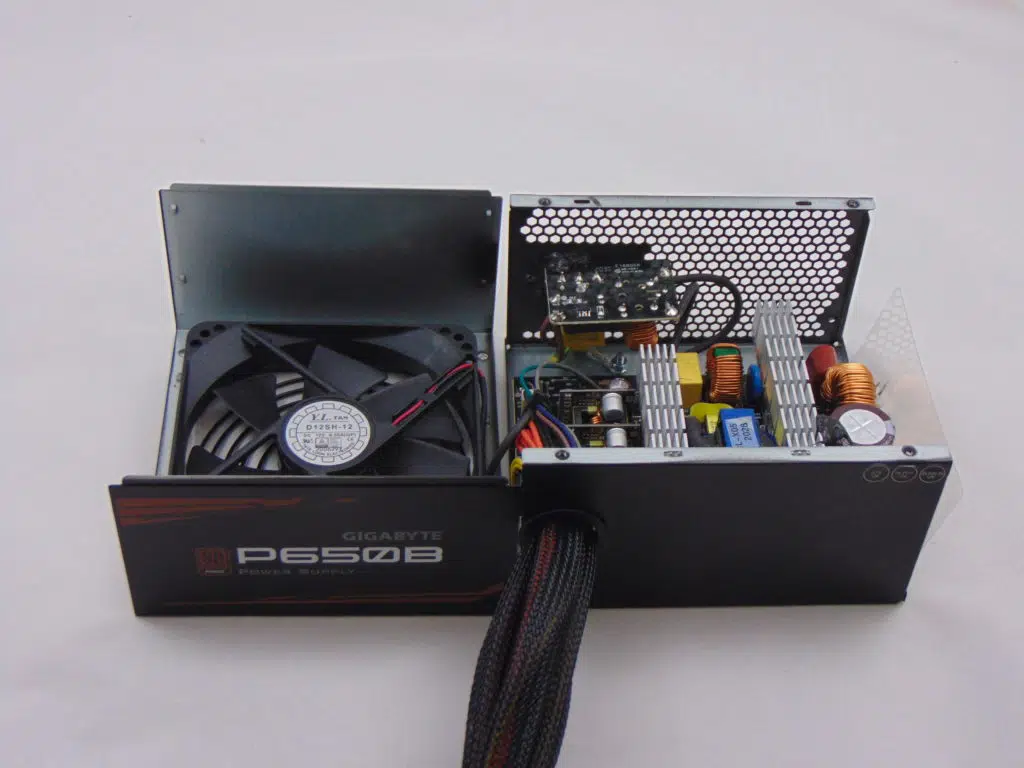


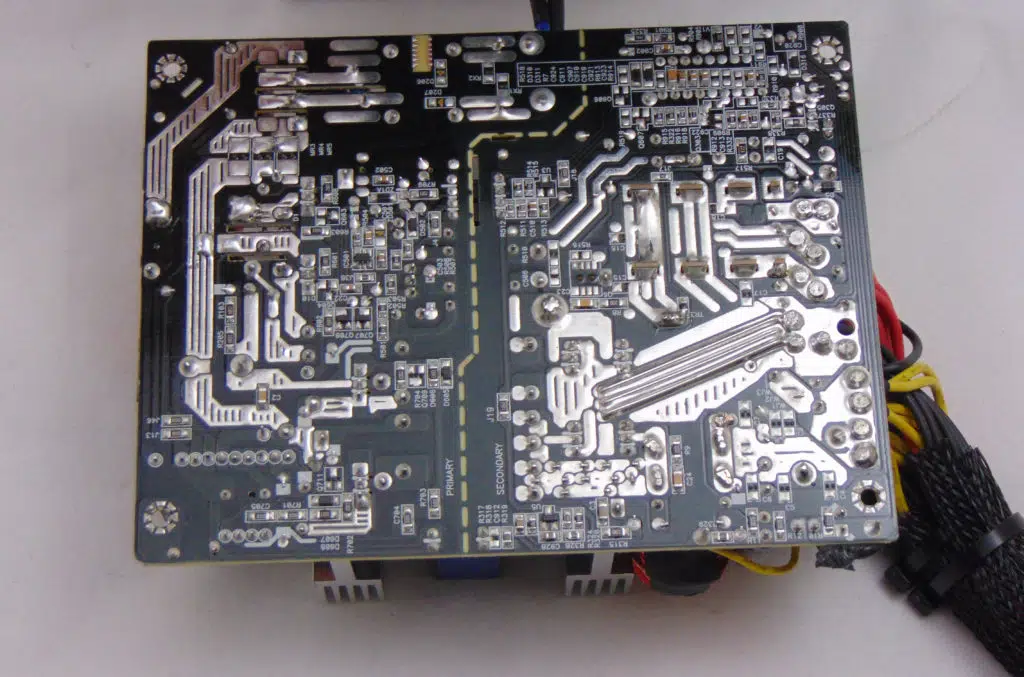
Once we open the top of the GIGABYTE P650B, we see a unit built by MEIC which is not something we see that often. The topology has a half-bridge resonant LLC primary with a synchronous rectification secondary and DC-DC VRM’s for the minor rails. The fan cooling this unit today is a Yate Loon model rated at 0.30A at 12v and it is listed as being a ball bearing design. It is paired with two large heatsinks. Lastly, the soldering is generally good on the backside of this single-layer PCB.
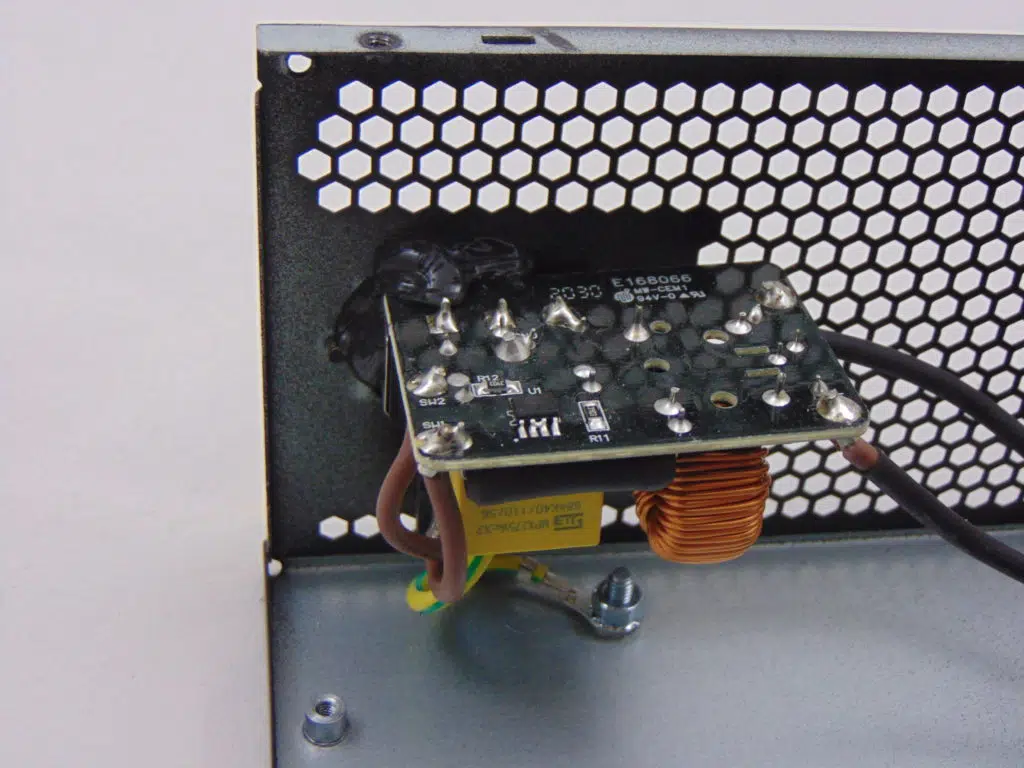


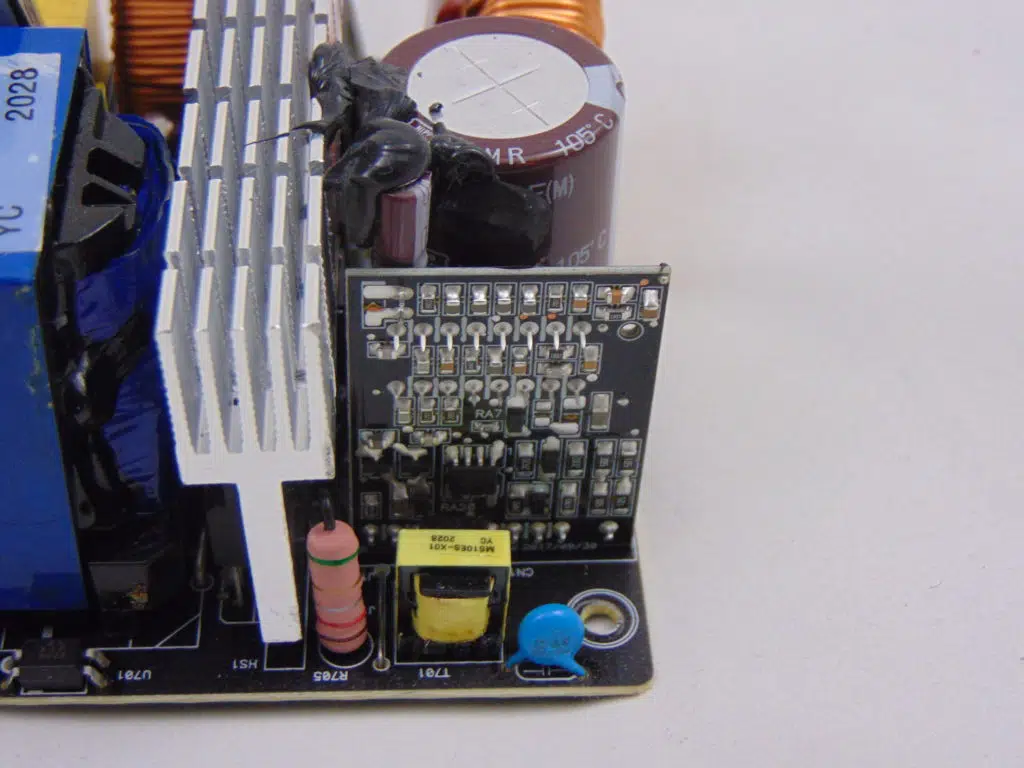
The GIGABYTE P650B input filtering begins up on the housing itself where we find a PCB with some X capacitors, Y capacitors, and a coil. The balance of the input filtering is found on the back edge of the main PCB. There is then a bridge rectifier attached to the large primary side heatsink. The APFC coil is next and behind it is the main input capacitor which is provided by Nippon Chemi-con with a rating of 400v 390uF 105C. The main switching transistors are then attached to the large primary side heatsink seen here.
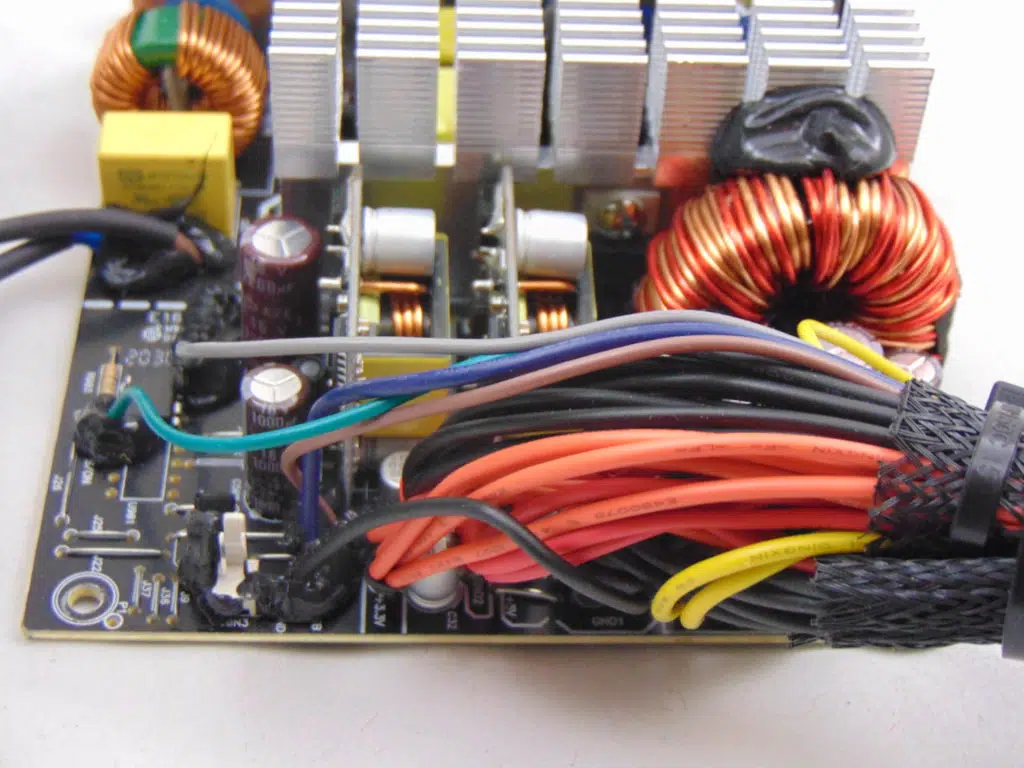
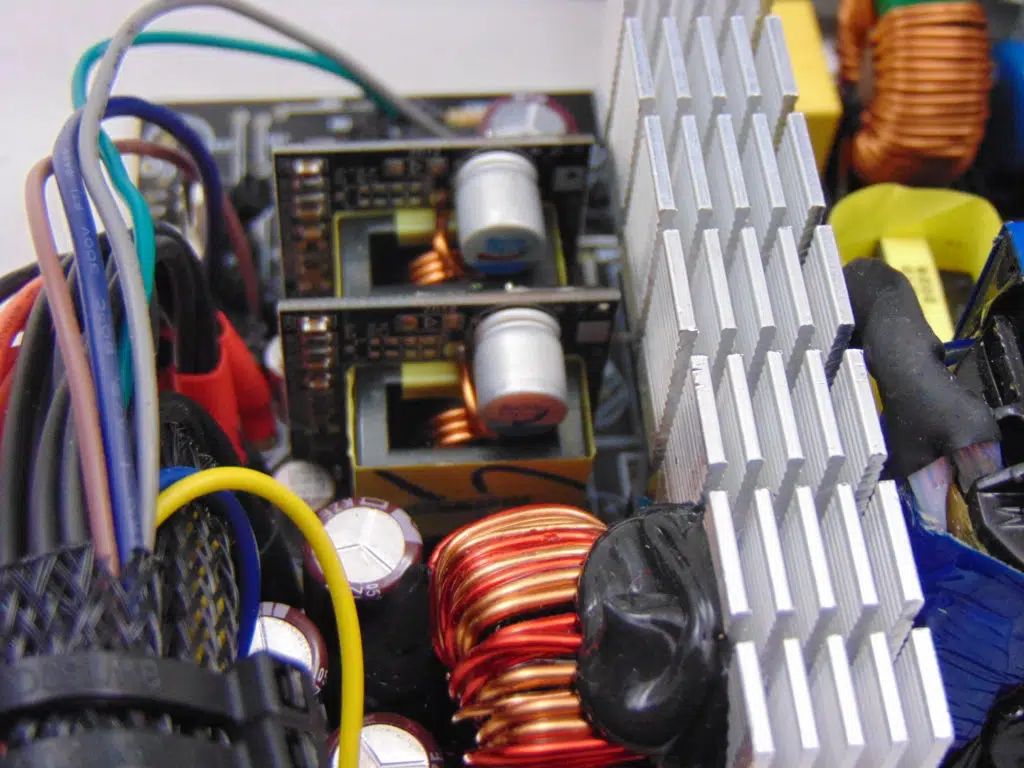
The secondary side of this unit looks rather open (except for the fixed cables portion) which is good from an airflow perspective. In the very middle of the unit are transformers. Then we come to the heatsink for cooling the 12v MOSFETS. Finally, we come to the DC-DC VRM PCBs.
The DC-DC VRMs are housed on their own PCBs (populated by Nippon Chemi-con solid capacitors) up against the wiring. Around these PCBs, we find a few standard electrolytics provided by Nippon Chemi-con. The wiring is all bundled tightly here however we do notice that a number of ground leads are not populated and there are a couple of FPCAP solid capacitors hidden amongst the wiring.
Build Quality Summary
Today’s GIGABYTE P650B is the second power supply we have seen from GIGABYTE and it starts things off on a mixed foot just like the first one did. Overall, the integration looks excellent but the layout and design choices leave some serious questions. The exterior is done but not with much attention paid to providing it with a presence. The cables are all sleeved in regular wire loom but they are not complete.
The component selection is, surprisingly, better than what we saw with the P750GM as we do get “Japan Capacitors” this time. The wet electrolytics are provided by Nippon Chemi-con while the solid capacitors are split between FPCAP and Nippon Chemi-con. Moving on from that, we see a ball bearing fan from Yate Loon cooling this unit and a single layer PCB with decent soldering. All in all, then, the GIGABYTE P650B is a bit of a mixed bag starting things off today but not quite as mixed as the P750GM was. Let’s move on now to the load tests and see how this unit performs!
